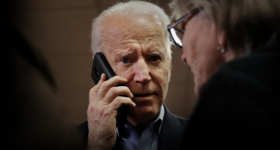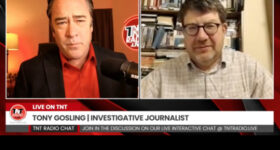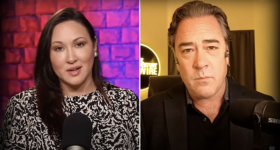The ECB is technically insolvent, but we won’t hear that on primetime
By Andrew McKillop
21st Century Wire
July 16, 2011
Once upon a time there was the Eurozone and its all-new hard money, the EURO…
It got off to a good start with a monstrously high forced surrender cash-in rate for the national moneys it replaced: depending on country, around 15 to 25 percent above the euro’s real worth. This yielded several years in the early 2000’s when it wasn’t even necessary to doctor the official inflation numbers, but through a penchant for old ways and traditions, national economic agencies, the European Commission, the ECB and other rightly named players kept on doing it. This made sure that all of its fundamental economic data was absolutely fake, an important aid to launching a now-floundering ‘cuckoo’ fiat money.
KEEPING THE MONEY STRONG
The 1956 Treaty of Rome and subsequent treaties like Maastricht and Nice lectured that governments must leave their central banks alone and not force them to liquidate gold assets. They could play around with SDRs and paper gold behind closed doors at the IMF, but in their home patch the central bank’s role is currency and money supply management, not government financing woes. Making this a lot less than sure by creative interpretation of the founding texts, the creation of the ECB and operation of the Eurozone, recently expanded to 17 countries, included the Protocol of the European System of Central Banks and European Bank, with “ESCB” being the correct name for the Euro zone.
This protocol says in one of its Articles that neither the ECB, nor any national central bank, nor any member of their decision-making bodies will be told what to do by any European Union institution, body or national government.
Another article prohibits community institutions or governments having what the article calls ‘overdrafts’, or any other type of easy loan facility with the ECB, or with any national central bank. This rather ferocious, seeming limit on selling gold, of course in secret, was easily got around by interpreting it to mean that gold cannot be put up as collateral for loans received by a central bank and passed on to private banks or to its national government- but it can be swapped.
While the IMF’s recent director Strauss-Kahn was surely interested in wife-swapping, his gold-swapping appetite was even stronger, with the IMF’s action in this domain on an extreme high since Strauss-Kahn moved in, during late 2007. Since then, the swapping bug has new and powerful adepts, or competitors, in Europe as the IMF, ECB, the US Federal Reserve and European central banks scramble to invent, shuffle, swap and sell paper gold, buy government debt, and bail out any private banks who belong to the club.
SELLING GOLD
The ECB under another French political nominee, J-C Trichet, lost no time with its Eurozone central banking partners in ignoring these strictures and ran official gold sales rising from around 35 tons a year, to their first high point in 2009 at 142 tons. In 2010 the brakes were slammed, and sales crashed to 6.2 tons. Official reasons given for this nicely underline the schizophrenic balancing act played out by all central banks and the governments they are officially independent from and unrelated to.
On the one hand central banks seek a low and preferably declining gold price, because a low gold price (by money magic) means that fiat paper moneys they also print and circulate will seem relatively stronger in comparison. To help that process, claimed to generate and maintain confidence and trust in their paper moneys, they have to sell gold.
On the other hand if the gold price is rising, they have to buy gold, and by 2010 (in fact long before), gold was showing ugly signs of going only one way: up. Central bankers mulled the dire fact that gold, by 2010, had its best 10-year streak for price growth – since the 1920s – a fateful decade for central bankers, and everybody else after 1929.
The Central Bank Gold Agreement (CBGA) set at the dawn of the 2000’s, sought limited and controlled European central bank gold sales because of concern that uncoordinated selling was destabilizing the gold market and driving down gold prices too far – despite this being what one side of the Jekyll-and-Hyde central banker psyche wants. In February 2001 gold prices had fallen from their previous record high (in nominal dollars) of $850 an ounce, reached in 1980, to $253. By September 2010 the price had grown to $ 1300, and today is menacing to break out from current levels around $1550 to unknown and exotic new extremes – for central bankers.
By pure schizophrenia therefore, gold selling suddenly became dangerous and unacceptable in late 2010 but well before then, from 2008, national governments were in panic mode on sovereign debt, budget deficits and collapsing private banks across Europe, in the USA, and Japan. They needed huge new amounts of financing, and central banks had no choice but to pony-up liquid cash using the only real hard asset they have: their gold reserves. They were therefore thrust into the purest of all two-way splits: they had to buy (or in fact invent) gold, while they also had to sell both real and invented gold: needing a frenzy of gold swaps.
THE FRAGILE ECB
The ECB could be called the worst possible mix-and-mingle of classic central bank and semi-federal bureaucratic institution. Both secretive and incompetent, it has intensified Europe’s sovereign debt crises by waiting too long to act, then panicking in an unproductive way. The Bank’s hard asset gold and gold related financial resources (called gold-related receivables), are based on its declared gold reserves of 522 tons at end 2010, with a value of less than €20 bn at today’s gold price ($1550 per ounce). With other resources, whose value or present worth is market price-related, its total reserves are in nominal terms about €82bn but its current operations and exposure, notably the buying of Greek debt and loans to Greece, and loans to other PIIGS countries, stood at around 444 billion euro as of June 2011.
The Bank is therefore now leveraged around 23 to 24 times relative to its real capital base, meaning that should the ECB see the value of its assets fall by less than 5 percent, from booking losses on its loans, from purchases of bad government debt in the PIIGS, or from selling gold at one price but then having to buy it back again at a higher price, its entire capital base would be wiped out. To be sure, that is ‘unthinkable’ because the ECB, even more so than most other central banks is ultimately underwritten by taxpayers. In turn this means there is a hidden – and potentially huge – cost of the Eurozone crisis to taxpayers buried in the ECB’s books.
Hefty losses for the ECB are no longer a remote risk. Greece is effectively already in ‘rolling default’ because it does not have the capacity to pay double-digit interest rates on its ballooning debt, as shown by the supposedly disappointing results from each new bail-out package from the EU, ECB and IMF. To date. the ECB has probably taken on around €200bn in Greek assets, in other words well over twice the ECB’s capital base, and as much as 8 times the value of its 500-odd tons of gold at current gold prices. Since value compression from the penny-on-the-dollar forced sale of Greek national assets is predictably ferocious, and investor-speculators operate a classic raid on its assets, encouraged by all the institutional players including the European Commission and European governments, this will cause large losses to the ECB.
Some forecasts put the probable loss for the ECB, only on its Greek operations at around €45 to €65 billion, depending on how deep the write-downs and losses are and how long the crisis drags on..
A loss of this magnitude would make the ECB insolvent – meaning taxpayers in the Eurozone 17 countries will have to finance its recapitalisation. Alternatives exist: the Bank could ask Eurozone governments to send it more cash through a capital call on their national central banks, which could sell some of their gold to raise the cash. In theory and almost always in practice when a central bank is recapitalised it will print and issue more money. The ECB would therefore almost certainly print more euro notes and organize more euro coin minting, making it certain the results are inflationary, which is specially unacceptable for Germany, the strongest economy in Europe, with the second-largest central bank stock of gold in the world. The risk of Germany quitting the euro, or in fact, keeping it for a selected and restricted club of ‘hard money capable’ countries would radically increase.
THE NUMBERS DON’T ADD UP
Looking at the debt-and-deficit crises of the Europe-USA-Japan threesome it is hard to say which one might be less out of control than the others. Each has its special edge of unreality and uncontrollability, with the USA oppressed by the single biggest debt load, the Europeans having the fastest spreading and most dangerous loss of control, and the Japanese having the oldest and most untreatable hyper-debt.
If we took the total official gold stocks of the world’s 180-plus central banks, or the 15 – 19 European parties to different versions of the CBGA since 1999, and the current gold price which central bankers tell us is extreme high and dangerous, the present total net worth of these two official gold piles is not just tiny, but minuscule in relation to present-day sovereign debt and deficit crises.
If by magical means it was possible to sell the biggest of these two piles, world total central bank gold reserves as reported to the World Gold Council, around one-third of it held by CBGA parties, this would produce about $1500 billion. This is far short of the Obama administration’s annual deficit for 2011. Even the recent and current ECB and IMF bailout of Greece, costing above $250 billion, is one-sixth of that amount – to unsuccessfully bail out the sinking finances of one small country with 11 million inhabitants. Japanese sovereign debt is over $12 300 billion, and growing, most recently by a probable $150 billion hit from the Fukushima disaster, with the same again for tsunami damage.
Question: What can central bank gold stocks do against that ?
Possibly this is known, but also possibly it is too extreme to be understandable – by central bankers and their ilk. Heavy attention in government-friendly and politically correct media has gone to the horse-trading process for shoehorning France’s own Christine Lagarde, a near world class swimming champion in her youth – into the IMF. Europe wants and needs the directing role, because Europeans must invent and swap an awful lot of gold, fast.
Under Strauss-Kahn the “loan portfolio” of the IMF was multiplied from $1 billion in 2006 to around $100 billion today, and the amount of paper SDRs the IMF could print, allocate and shuffle between member countries were drastically raised, but the numbers remain derisively small compared with the size of the problem.
The next quantum leap in IMF financial resource creation, all of which have a ‘gold handle’ somewhere in their design, might only need to be 10-fold, or 20-fold, we are told by believers to expect ‘good luck’ and to muddle through, but how the IMF could do this trick is still relatively unknown. In the event of failure, we are forced back to the rather gob-smacking scenario of an ‘entirely new money’ being created.
Financial markets, as expected are doing their predictable best to drive the crisis. The US debt ceiling of $14 300 billion sets a nice playing field for political horsetrading and name-calling; after Greece, market operators in Europe are quaking with music hall fear from their surprise discovery that Italy is a super Greece; and Japan’s latest weak government is on its way out as national debt racks on and up by as much as $400 billion only since March. Ingredients have fallen into place for a Summer Panic on world stock markets – which is unusual in modern times, but no problem at all if we go back to classic Victorian-era panics.
NEW MONEY
To be sure, both political elites and their well-disciplined media and press supporters will hunker down and try to ignore the crisis, driving financial market operators to new extremes of saying out loud what they want: easy cash and low interest rates. They have the whip hand for exactly that reason. Easy cash and low interest rates has been the only tune in town since 2008 – but the results are unreal. Saying there is no cause for concern is nice or traditional, but the vastest amounts of extra money ever printed in human history has failed to do anything to, or with the real economy: this is more than just alarming.
Today’s crisis is totally unlike the 1979-1980 panic era. This is despite the “Crash of 79” being cited more and more as the likely model for what happens now, featuring the solid-looking precedents of high gold and oil prices, high unemployment, banking sector stress, rising government deficits and falling regimes in the Arab and Muslim world. Today’s crisis has major missing ingredients: high inflation and high interest rates. It also includes ingredients that weren’t present in 1979: the BRICS are big creditor nations today, both China and India are massively industrialising. They have both, like Russia and Brazil, on many times warned they are not happy with the dollar’s constant loss of value. In 1979, sovereign national debt in the OECD countries was often tiny and sometimes nonexistent – Japan for example was a huge net creditor country with the rest of the world.
One new money could in theory therefore come from over the horizon, BRICS Money, but even a moment’s look at the idea shows this neat fantasy is as unreal as the debt-and-deficit crisis of the OECD group. Gold-backed money, an idea that was tried in the 1920s, but resulted in gold prices only rising and the gold-backed moneys of the day folding one by one, is another popular quick solution, among many observers, but would have direct consequences. To work, it would need a cut in world liquidity by let us say 90 percent, to allow each new bill or note to command, equate to and freely exchange with a measurable speck of metallic gold.
Bancor-type money of the Keynesian genre, in fact never really detailed in the ramblings of Keynes but featuring a basket of real resources able to range across the commodities space, could or might be a candidate new single world reserve currency. Massive intervention across global commodity markets would be needed, with a huge risk of price spirals, and crashes in the value of the ‘fiduciary resources’, that is commodity values. Setting up this nice idea would take a lot more than a single day’s work for ex-swimming champ Lagarde at the IMF.
Other genial-seeming solutions have already come and gone. In particular the Carbon Money trial balloon of 2009, heavily promoted by Strauss-Kahn at the IMF, which folded as fast as it had appeared.
We can unfortunately be sure that financial market operators have their own solution: another 1929. Lemming-like and driven by herd instinct, they are drawn to these kind of events because. In certain market contexts like the present there is one Total Solution: sell everything, except of course gold.
Leads and ideas from the finance sector can be counted on for their apocalyptic-type absence, forcing the question back into the public arena. This unfortunately is not prepared to deal with such a fundamental question. We could or might suggest that No Alternative economics, as some early neoliberals in their heyday right after the crash of 1979 called their first solution of the day – high street bank interest rates gouged to 20% or more in OECD countries – has generated a No Solution crisis in 2011.
The problem may be so special, and so big we can only anticipate and hope for unprecedented solutions. These would likely be forced to include debt moratoriums on some of the biggest economies of the world, starting with the USA, existing moneys would have to be protected from implosion, world prices of key basic commodities would have to controlled – but whatever the solutions, they will have to come fast.
–
















